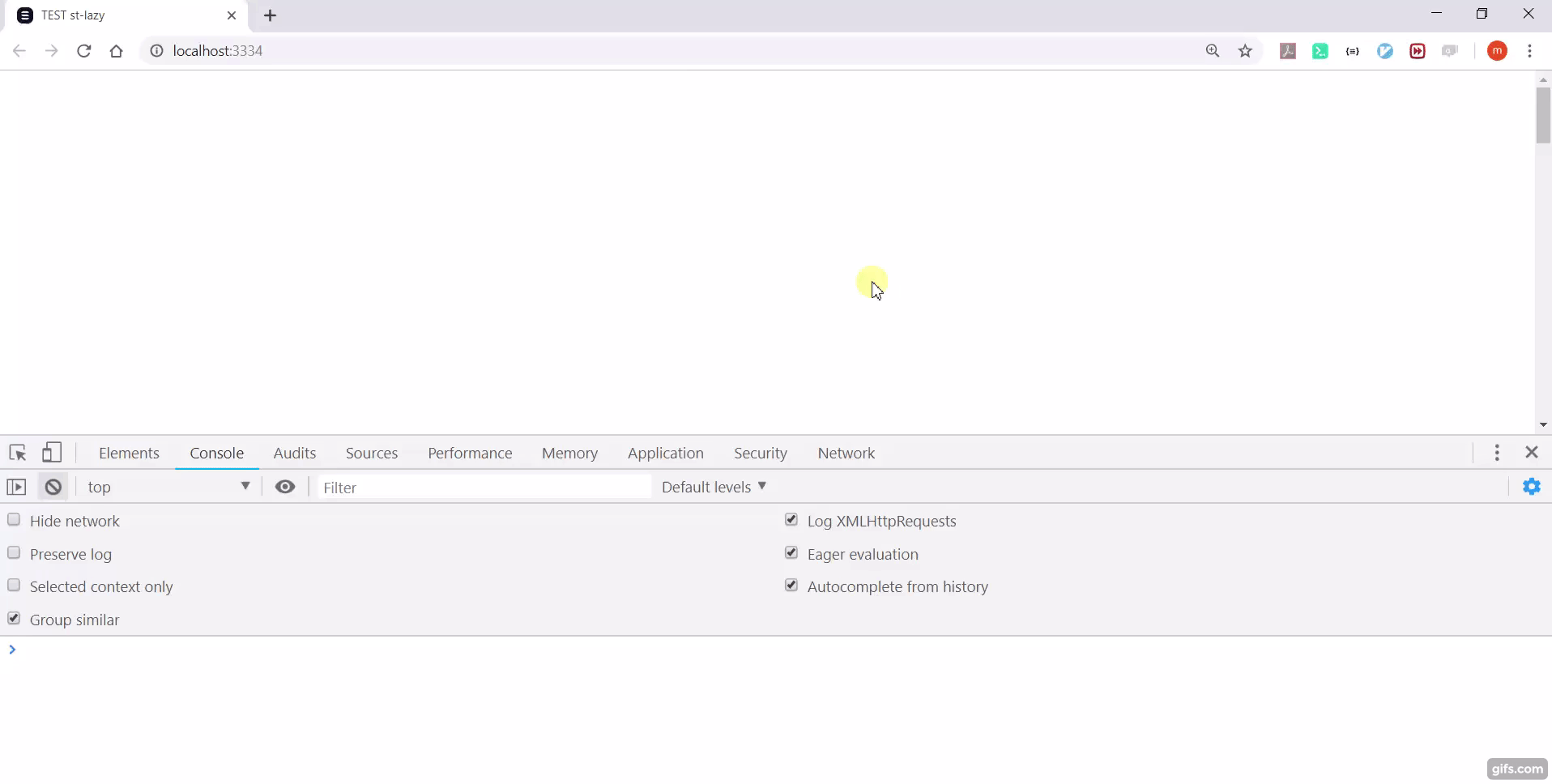Package Exports
- st-lazy
This package does not declare an exports field, so the exports above have been automatically detected and optimized by JSPM instead. If any package subpath is missing, it is recommended to post an issue to the original package (st-lazy) to support the "exports" field. If that is not possible, create a JSPM override to customize the exports field for this package.
Readme
st-lazy
What is it?
st-lazy is Stencil collection of tools for lazy loading. Beating heart of this library is @Lazy decorator that allows you to call component method as the user scrolls component into the viewport. On supported browsers (Chrome and chrome based browsers, Firefox and Edge) it uses IntersectionObserver to accomplish this functionality. For Safari and IE it simply falls back to setTimeout. Inspired by st-img
Installing
Just add module to your Stencil project package.json:
npm i st-lazyYou can also benefit from this package outside of Stencil world. To do so you can either
- put
st-lazyas dependency in your package.json and import web component that is relevant for you - or if outside of npm you can pop this script tag
script async defer src='https://unpkg.com/st-lazy@0.5.0/dist/stlazy.js'></script>into you index.html Then you can just use web components in your html/jsx
Repo contains
1. @Lazy
@Lazy is a simple decorator that allows you to call component method as the user scrolls component into the viewport.
How to use it?
It's very simple: you just need to anotate your method with @Lazy and it will be called when host component is scrolled to viewport. Method will be called once - the first time you scroll to component. Additionally you need to pass host's @Element. You can do it in two ways:
Option 1: passing host element with @LazyHost
import { Component, Element } from '@stencil/core';
import { Lazy, LazyHost } from 'st-lazy';
@Component({ tag: 'lazy-component', shadow: true })
export class LazyComponent {
@LazyHost() @Element() host;
@Lazy()
someMethod() { console.log("someMethod was called because user scrolled to LazyComponent"); }
render() { return <div>Hello, World!</div>; }
}Option 2: passing host element manually
import { Component, Element } from '@stencil/core';
import { Lazy } from 'st-lazy';
@Component({ tag: 'lazy-component', shadow: true })
export class LazyComponent {
@Element() host;
@Lazy("host")
someMethod() { console.log("someMethod was called because user scrolled to LazyComponent"); }
render() { return <div>Hello, World!</div>; }
}When use it?
Basically you can think of every action that you would normally do in componentWillLoad. Maybe some of those actions are time consuming, generating not needed network traffic and not giving any benefit to most of users? Good example is calling an API to get data to be presented by component. Maybe most of users are not even checking some forgotten carousel on the bottom of every page in your app?
Example
Following component
import { Component, State, Element } from '@stencil/core';
import { Lazy, LazyHost } from 'st-lazy';
@Component({
tag: 'test-st-lazy'
})
export class TestStLazy {
@State() name: string;
@LazyHost() @Element() host;
@Lazy()
getName() {
console.log("fetching user data...");
setTimeout(() => {
fetch("https://jsonplaceholder.typicode.com/users/1")
.then(res => res.json())
.then(data => {
this.name = data.name
console.log(this.name);
})
}, 300);
}
render() {
return (
<div><p>Hello {this.name}</p></div>
);
}
}...on the page
<body>
<div style="height: 1000px"></div>
<test-st-lazy></test-st-lazy>
</body>gives

2. st-lazy
st-lazy is a Stencil component to lazy load other components while its scrolled to viewport.
Why?
Stencil is lazy loading components by default. It loads only the ones that are actually used on the page. Here we lift it. st-lazy component is using IntersectionObserver to load the component by name only if it is in the viewport. On non supported browsers (IE, Safari) it falls back to setTimeout unless you use polyfill.
Example
having a simple component
import { Component } from '@stencil/core';
@Component({
tag: 'test-st-lazy'
})
export class TestStLazy {
componentWillLoad() {
console.log('The TestStLazy is about to be rendered');
}
componentDidLoad() {
console.log('The TestStLazy has been rendered');
}
render() {
return (
<div><p>Was I lazy loaded with st-lazy?</p></div>
);
}
}
and page
<body>
<div style="height: 1000px"></div>
<st-lazy
component="test-st-lazy">
</st-lazy>
</body>gives

As you can see component is not loaded untill it's scrolled onto viewport. Then full component lifecycle runs.
3. st-lazy-img
st-lazy-img is a Stencil component to lazy load image while its scrolled to viewport.
Example
<body>
<div style="height: 1000px"></div>
<st-lazy-img
src="https://stenciljs.com/assets/img/logo.png"
fallback-src="https://encrypted-tbn0.gstatic.com/images?q=tbn:ANd9GcQ5VWGwI_ToYUkeZjAxP16jZB94Yzus4Q5YErjzzB2C44rWKwL7"
alt="Lazy image">
</st-lazy-img>
</body>gives

